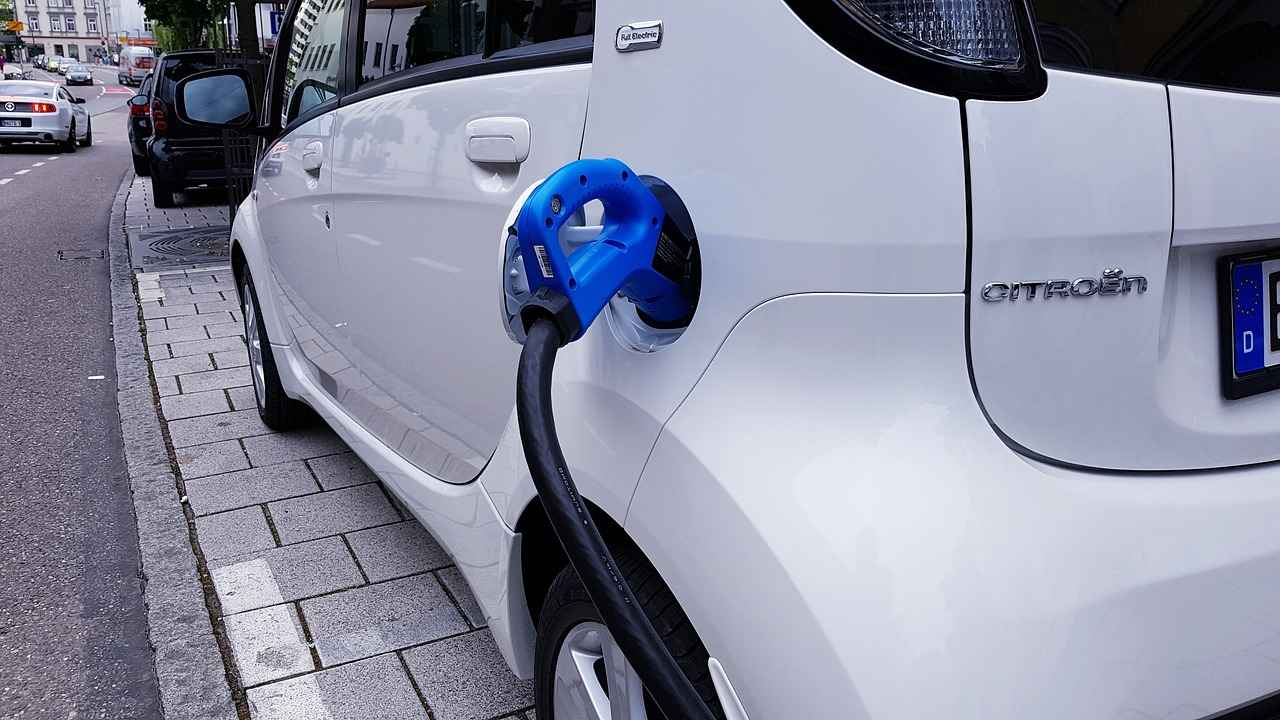This article delves into the fascinating journey of electric bikes, covering their historical development, technological advancements, and future trends. It aims to equip enthusiasts and potential buyers with comprehensive insights into the world of electric bicycles.
The Birth of Electric Bikes
Electric bikes have a storied history that dates back to the late 19th century. The earliest forms of electric bicycles emerged as inventors experimented with electric motors and batteries, laying the groundwork for the modern electric bike. Understanding these origins is essential to appreciate the innovations that have shaped their evolution.
Key Components of Electric Bikes
- Batteries: The core of electric bikes, influencing range and efficiency.
- Motors: Provide the necessary power for propulsion.
- Controllers: Manage the bike’s performance and user interface.
Batteries: The Heart of Electric Bikes
The battery is arguably the most critical component of an electric bike. Its capacity and type significantly influence the bike’s range and efficiency. Lithium-ion batteries are often preferred due to their lightweight nature and longevity compared to older lead-acid options.
Battery Maintenance Tips
- Regularly charge the battery to maintain optimal performance.
- Avoid exposing the battery to extreme temperatures.
- Follow manufacturer guidelines for care and maintenance.
Types of Electric Bikes
Electric bikes come in various styles to suit different riding preferences:
- City Electric Bikes: Designed for urban commuting with features like fenders and lights.
- Mountain Electric Bikes: Built for off-road adventures with robust frames and enhanced suspension.
Technological Innovations in Electric Bikes
Recent advancements have significantly improved electric bikes. Innovations such as smart technology and improved battery management systems are enhancing user experiences.
Future Trends in Electric Bikes
Looking ahead, the electric bike industry is poised for exciting developments:
- Battery Technology Innovations: Future batteries promise longer ranges and quicker charging times.
- Integration with Smart Cities: Electric bikes are becoming part of sustainable urban transport solutions.
Conclusion: The Future of Electric Bikes
The evolution of electric bikes represents a harmonious blend of innovation and sustainability. As technology continues to advance, electric bikes are set to become a staple in modern transportation, providing eco-friendly alternatives for commuters and adventurers alike.

The Birth of Electric Bikes
marks an intriguing chapter in the history of transportation. The concept of electric bicycles can be traced back to the late 19th century, a time when innovation was rapidly transforming the world. The first known patent for an electric bike was filed in 1895 by Ogden Bolton Jr., showcasing a design that utilized a small motor mounted on the rear wheel. This invention was a precursor to the electric bikes we see today, combining traditional cycling with the burgeoning field of electrical engineering.
As technology progressed through the 20th century, electric bikes saw various iterations and improvements. The introduction of batteries in the mid-20th century facilitated the development of more practical electric bicycles. However, it wasn’t until the late 1990s and early 2000s that electric bikes began to gain significant traction in the market. The rise of lithium-ion batteries played a pivotal role in this resurgence, offering lighter and more efficient power sources compared to their predecessors.
Today, electric bikes are classified into several categories, including pedelecs and throttle-controlled bikes. Pedelecs provide assistance only when the rider pedals, while throttle-controlled bikes can be powered without pedaling. This diversity caters to a wide range of users, from casual riders to serious commuters.
In addition to their practical benefits, electric bikes promote sustainability. They offer a viable alternative to cars, reducing carbon emissions and traffic congestion in urban areas. As cities become increasingly crowded, the demand for eco-friendly transportation solutions is more critical than ever.
Looking forward, the evolution of electric bikes continues to be shaped by advancements in technology and changing consumer preferences. The future promises even more efficient designs, enhanced connectivity features, and integration into smart city frameworks. Understanding the birth and development of electric bikes helps us appreciate their significance in modern transportation.

Key Components of Electric Bikes
Electric bikes, often referred to as e-bikes, have transformed the way we perceive cycling. At the heart of their functionality are several crucial components that work in harmony to deliver an exceptional riding experience. Understanding these components is essential for both enthusiasts and potential buyers.
- Batteries: The lifeblood of any electric bike, batteries determine the range and efficiency of the ride. Most modern e-bikes use lithium-ion batteries due to their lightweight nature and longer lifespan compared to older technologies like lead-acid batteries.
- Motors: The motor is responsible for providing the necessary propulsion. There are different types of motors, including hub motors and mid-drive motors, each offering unique advantages depending on the riding conditions.
- Controllers: This component acts as the brain of the e-bike, managing the power distribution between the battery and motor. It allows riders to adjust settings and optimize performance based on their needs.
Each of these components plays a vital role in enhancing the bike’s performance and overall user experience. For instance, the battery capacity directly affects how far you can travel on a single charge, while the type of motor can influence the bike’s handling and speed.
When selecting an electric bike, it’s essential to consider these components carefully, as they will significantly impact your riding experience. Understanding how they work together can lead to better choices and a more enjoyable journey.
In conclusion, the key components of electric bikes—batteries, motors, and controllers—are fundamental to their operation. As technology advances, we can expect even more innovations in these areas, enhancing the capabilities and appeal of electric bikes for a wider audience.
Batteries: The Heart of Electric Bikes
Batteries are often regarded as the heart of electric bikes, playing a pivotal role in determining their overall performance and user satisfaction. The significance of a battery’s capacity and type cannot be overstated, as these factors directly influence the bike’s range and efficiency.
When it comes to electric bike batteries, the most common types are lithium-ion and lead-acid. Lithium-ion batteries are preferred for their lightweight nature and longer life span, making them ideal for modern electric bikes. In contrast, lead-acid batteries, while cheaper, tend to be bulkier and less efficient, leading to a shorter range and more frequent replacements.
Understanding battery specifications is essential for potential buyers. The capacity of a battery, measured in amp-hours (Ah), indicates how much energy it can store. A higher capacity allows for longer rides without recharging, making it a critical factor for those who plan to use their electric bikes for commuting or long-distance travel.
In addition to capacity, the discharge rate is another important parameter. This rate determines how quickly the battery can release its stored energy. A battery with a high discharge rate can deliver power more efficiently, providing better acceleration and performance during rides.
Battery maintenance is equally vital for ensuring longevity and optimal performance. Regular charging habits, avoiding extreme temperatures, and adhering to manufacturer guidelines can significantly extend the life of an electric bike battery. Riders should also be aware of the signs of battery wear, such as diminished range or slower charging times, and take appropriate action.
In summary, the battery is a fundamental component of electric bikes, influencing not only their range and efficiency but also the overall riding experience. By choosing the right battery type and maintaining it properly, riders can enhance their electric biking adventures.
Lithium-Ion vs. Lead-Acid Batteries
Lithium-ion batteries have become the standard choice for electric bikes, primarily due to their lightweight design and impressive longevity. In contrast, lead-acid batteries are typically heavier and less efficient, which can significantly affect an electric bike’s overall performance.
One of the key advantages of lithium-ion batteries is their energy density, which allows them to store more energy in a smaller and lighter package. This characteristic translates to a longer range for electric bikes, enabling riders to travel greater distances without needing to recharge. For instance, a lithium-ion battery can provide a range of up to 50 miles on a single charge, while a lead-acid battery might only offer around 20 miles.
Moreover, lithium-ion batteries have a longer lifespan, often lasting for 2,000 to 3,000 charge cycles, compared to the 500 to 1,000 cycles typical of lead-acid batteries. This longevity not only reduces the frequency of replacements but also contributes to lower long-term costs for users.
Another factor to consider is the charging time. Lithium-ion batteries generally charge faster, with many models capable of reaching full charge in 3 to 5 hours. In contrast, lead-acid batteries can take significantly longer, often requiring up to 12 hours or more to fully recharge. This difference can be crucial for users who need to quickly get back on the road.
In summary, the choice between lithium-ion and lead-acid batteries can greatly impact the performance of electric bikes. With their lightweight nature, long lifespan, and efficient charging, lithium-ion batteries are often the preferred option for modern electric bike users, enhancing overall riding experience and performance.
Battery Maintenance Tips
Maintaining the health of your electric bike’s battery is crucial for ensuring longevity and optimal performance. Here are some essential tips to help you keep your battery in top condition:
- Regular Charging: It is important to charge your battery regularly, even if you haven’t used your bike for a while. Lithium-ion batteries, which are commonly used in electric bikes, perform best when kept between 20% and 80% charge. Avoid letting the battery completely drain, as this can shorten its lifespan.
- Avoid Extreme Temperatures: Batteries are sensitive to temperature fluctuations. Keep your electric bike and its battery in a cool, dry place. Extreme heat can lead to overheating, while extreme cold can reduce performance. Ideally, store your bike in a temperature-controlled environment.
- Follow Manufacturer Guidelines: Always refer to the manufacturer’s instructions for specific care recommendations. Different batteries may have unique requirements for charging and maintenance. Adhering to these guidelines can prevent damage and ensure optimal performance.
- Clean Battery Contacts: Regularly inspect and clean the battery contacts to remove any dirt or corrosion. This helps maintain a good electrical connection and prevents potential performance issues.
- Monitor Battery Health: Many electric bikes come with battery management systems that provide information on battery health. Keep an eye on these indicators and address any issues promptly to avoid further complications.
By following these simple yet effective battery maintenance tips, you can significantly extend the lifespan of your electric bike’s battery, ensuring a smooth and enjoyable riding experience for years to come.
Electric Motors Explained
The electric motor is a crucial component of electric bikes, providing the necessary power for propulsion. Understanding the various types of motors available is essential for users to choose the right bike that meets their specific needs and preferences.
Electric motors can be broadly categorized into two types: hub motors and mid-drive motors. Each type has distinct characteristics that affect the bike’s performance and riding experience.
| Motor Type | Advantages | Disadvantages |
|---|---|---|
| Hub Motors |
|
|
| Mid-Drive Motors |
|
|
When selecting an electric bike, it is vital to consider the type of motor that aligns with your riding style. For instance, if you plan to navigate steep hills frequently, a mid-drive motor may be the better option due to its superior torque. Conversely, if you prefer a bike for casual city commuting, a hub motor could suffice.
In conclusion, understanding the differences between electric motors can significantly impact your riding experience. By evaluating your specific needs, you can make a more informed decision that enhances your overall satisfaction with your electric bike.

Types of Electric Bikes
Electric bikes, or e-bikes, have gained immense popularity due to their versatility and convenience. Understanding the different types of electric bikes is crucial for potential buyers, as each style is designed to cater to specific riding preferences and environments. Here, we explore the various categories of electric bikes to help you make an informed decision.
- City Electric Bikes: These bikes are primarily designed for urban commuting. They emphasize comfort and practicality, featuring a relaxed riding position, integrated lights, and fenders for weather protection. City electric bikes are perfect for navigating busy streets and tackling short distances.
- Mountain Electric Bikes: Built for off-road adventures, mountain electric bikes are equipped with sturdy frames, wide tires, and advanced suspension systems. They are ideal for tackling rugged terrains and steep trails, providing riders with the power and stability needed for challenging rides.
- Folding Electric Bikes: These bikes are designed for portability and convenience. Their foldable frames make them easy to store and transport, making them a great choice for commuters who may need to take public transport. Despite their compact size, many folding electric bikes offer robust performance.
- Hybrid Electric Bikes: Combining features from both city and mountain bikes, hybrid electric bikes are versatile and suitable for a variety of terrains. They often come with wider tires for stability and comfort, making them great for riders who enjoy both urban and off-road experiences.
- Fat Tire Electric Bikes: These bikes are designed with oversized tires, providing excellent traction and stability on soft or uneven surfaces such as sand or snow. Fat tire electric bikes are perfect for adventurous riders looking to explore diverse landscapes.
In conclusion, understanding the different types of electric bikes available can significantly enhance your riding experience. Whether you prioritize comfort, portability, or off-road capability, there’s an electric bike tailored to meet your needs.
City Electric Bikes
have rapidly gained popularity as an ideal solution for urban commuting. These bikes are specifically designed to cater to the needs of city dwellers, focusing on comfort and practicality. As cities become increasingly congested, the demand for efficient and eco-friendly transportation options continues to rise.
One of the standout features of city electric bikes is their emphasis on comfort. Riders benefit from an ergonomic design that promotes a natural riding posture, reducing strain during commutes. Additionally, many models come equipped with fenders to protect against splashes, ensuring a cleaner ride even in wet conditions. Integrated lights enhance visibility, making night rides safer and more enjoyable.
- Fenders: Essential for keeping you dry and clean.
- Lights: Improve safety during early morning or evening rides.
- Comfortable Seating: Designed to support longer rides without discomfort.
Another key aspect is the practicality of these bikes. Many city electric bikes feature cargo racks or baskets, allowing riders to carry groceries or personal items easily. This makes them not just a mode of transport, but also a practical tool for daily errands.
Furthermore, city electric bikes are often equipped with powerful motors that assist riders in navigating through urban landscapes efficiently. With various levels of pedal assist, riders can choose how much help they want from the motor, making it easier to tackle hills or longer distances.
In conclusion, city electric bikes represent a significant advancement in urban transportation. Their design prioritizes both comfort and practicality, making them an excellent choice for anyone looking to enhance their commuting experience while contributing to a more sustainable future.
Mountain Electric Bikes
are specifically designed to conquer rugged terrains and provide an exhilarating riding experience. These bikes are equipped with several features that set them apart from standard electric bikes, making them ideal for off-road adventures.
One of the most notable characteristics of mountain electric bikes is their robust frames. Constructed from high-quality materials, these frames are engineered to withstand the stresses of rough trails and challenging landscapes. The durability of the frame not only enhances the bike’s performance but also ensures the rider’s safety during intense rides.
In addition to sturdy frames, mountain electric bikes come with wider tires. These tires provide better traction and stability on uneven surfaces, allowing riders to navigate through mud, rocks, and steep inclines with ease. The increased surface area of the tires helps absorb shocks, resulting in a smoother ride even on the most challenging paths.
Another critical feature of mountain electric bikes is their enhanced suspension systems. These systems are designed to absorb impacts from rough terrains, providing a comfortable riding experience. With adjustable settings, riders can customize the suspension according to their preferences and the specific demands of the trail.
| Feature | Benefit |
|---|---|
| Robust Frames | Increased durability and safety |
| Wider Tires | Better traction and stability |
| Enhanced Suspension | Improved comfort on rough terrains |
Moreover, mountain electric bikes often include advanced motor systems that provide powerful assistance, enabling riders to tackle steep hills and long distances without excessive fatigue. Many models also come with smart technology features, allowing riders to track their performance and adjust settings on-the-go.
In conclusion, mountain electric bikes represent a significant advancement in cycling technology, offering enthusiasts the tools they need for thrilling off-road adventures. With their robust construction, superior traction, and advanced suspension systems, these bikes are perfect for anyone looking to explore the great outdoors.

Technological Innovations in Electric Bikes
In recent years, the electric bike industry has experienced remarkable technological advancements that have significantly transformed the way we perceive and use these vehicles. These innovations not only enhance performance but also improve the overall user experience, making electric bikes more accessible and enjoyable for a wider audience.
One of the most exciting developments is the integration of smart technology. Many modern electric bikes now come equipped with features such as GPS navigation, Bluetooth connectivity, and smartphone apps that allow riders to track their performance metrics, customize settings, and even lock their bikes remotely. This level of connectivity not only enhances the riding experience but also provides users with valuable data to optimize their journeys.
Battery management systems have also seen significant improvements. Newer models utilize advanced lithium-ion batteries that offer higher energy densities, longer lifespans, and faster charging capabilities. These batteries are designed to be lightweight yet powerful, allowing riders to travel longer distances without the need for frequent recharging. Additionally, many electric bikes now incorporate regenerative braking systems that capture energy during braking and redirect it back to the battery, further extending the bike’s range and efficiency.
Moreover, manufacturers are increasingly focusing on the user interface of electric bikes. Displays are becoming more intuitive, providing riders with real-time information about speed, battery life, and navigation. This user-friendly approach enhances the overall riding experience, making it easier for both novice and experienced riders to enjoy the benefits of electric biking.
In conclusion, the technological innovations in electric bikes represent a significant leap forward in the realm of personal transportation. With smart features, advanced battery management, and improved user interfaces, electric bikes are not just a trend but a sustainable and practical solution for modern commuting. As these technologies continue to evolve, we can expect even greater enhancements in performance and user experience, solidifying electric bikes as a vital part of our transportation ecosystem.
Smart Features and Connectivity
have become essential components of modern electric bikes, revolutionizing the way users interact with their rides. As technology continues to evolve, these bikes are not just about getting from point A to point B; they now offer a plethora of features that enhance the overall riding experience.
One of the most notable advancements is the integration of GPS navigation. This feature allows riders to easily find their way through unfamiliar territories, making it ideal for both urban commuting and adventurous trails. With real-time updates, users can receive alerts about traffic conditions, detours, or even the best scenic routes to take.
In addition to GPS, many electric bikes now come equipped with app connectivity. This functionality enables users to connect their bikes to smartphones, providing a range of benefits:
- Performance Tracking: Riders can monitor speed, distance, and battery life, allowing for better planning during rides.
- Customization: Users can adjust settings such as pedal assist levels and motor power, tailoring the bike’s performance to their preferences.
- Maintenance Alerts: Some apps can send notifications for regular maintenance checks, ensuring the bike remains in optimal condition.
Moreover, the social aspect of these apps cannot be overlooked. Many platforms allow users to share their rides, compete with friends, and participate in community challenges, adding a fun element to cycling.
As we look to the future, the integration of smart technology in electric bikes is expected to deepen. Innovations such as voice commands and AI-driven analytics will likely enhance user interaction further, making electric biking not just a mode of transportation but an engaging experience.
In conclusion, the evolution of smart features and connectivity in electric bikes signifies a shift towards a more integrated and user-friendly approach to cycling. By embracing these technologies, riders can enjoy enhanced safety, performance, and overall enjoyment on their journeys.
Regenerative Braking Systems
have emerged as a groundbreaking feature in the realm of electric bikes, revolutionizing the way energy is utilized during rides. This innovative technology not only enhances the overall efficiency of electric bikes but also significantly extends their range, making them more appealing to a wider audience.
When a rider applies the brakes, instead of wasting the kinetic energy generated during motion, regenerative braking systems capture this energy and convert it back into electrical energy. This energy is then fed back into the bike’s battery, effectively replenishing it and allowing for longer rides without the need for frequent recharging. This process not only conserves energy but also reduces wear on traditional braking components, leading to lower maintenance costs over time.
One of the most impressive aspects of regenerative braking is its ability to enhance the overall riding experience. Riders can enjoy smoother deceleration and greater control, particularly in urban settings where frequent stops are common. Furthermore, this technology aligns perfectly with the growing emphasis on sustainability and eco-friendliness, as it minimizes energy consumption and maximizes the use of renewable resources.
As electric bike manufacturers continue to innovate, we can expect to see even more advanced regenerative braking systems that integrate seamlessly with other technologies. For instance, some models are beginning to incorporate smart sensors that optimize energy recovery based on riding conditions and patterns. This level of sophistication not only improves efficiency but also personalizes the riding experience for users.
In conclusion, regenerative braking systems represent a significant leap in electric bike design, merging functionality with sustainability. As this technology evolves, it will undoubtedly play a crucial role in shaping the future of electric mobility, making electric bikes an even more attractive option for commuters and enthusiasts alike.

Future Trends in Electric Bikes
As we look ahead, the future of electric bikes is poised for remarkable transformation, driven by technological advancements and changing urban landscapes. With a focus on sustainability and user experience, electric bikes are set to play a crucial role in modern transportation systems.
Advancements in Battery Technology
One of the most significant trends is the ongoing innovation in battery technology. Future batteries are expected to offer greater energy density, allowing for longer ranges and shorter charging times. This will not only enhance the convenience of electric bikes but also attract a wider range of users, from casual riders to serious commuters.
Integration with Smart City Infrastructure
Electric bikes will increasingly be integrated into smart city initiatives. This integration includes features such as real-time traffic data, optimized routes, and connectivity with public transportation systems. Such advancements aim to create a seamless commuting experience, reducing urban congestion and promoting eco-friendly transportation.
Enhanced Connectivity and Smart Features
Modern electric bikes are beginning to incorporate smart technology, such as GPS navigation, app connectivity, and performance tracking. These features enable riders to customize their biking experience and monitor their health metrics, making electric biking not just a mode of transport but also a lifestyle choice.
Regenerative Braking Systems
Another exciting innovation is the development of regenerative braking systems. This technology captures energy generated during braking and redirects it to recharge the battery, significantly improving overall efficiency and extending the bike’s range. As this technology becomes more prevalent, it will further enhance the appeal of electric bikes.
Conclusion: Embracing the Future
The evolution of electric bikes reflects a growing commitment to sustainability and innovation. As battery technology advances and smart city integration becomes more common, electric bikes will likely become a cornerstone of urban mobility, offering an eco-friendly alternative for commuters and enthusiasts alike.
Battery Technology Innovations
The future of electric bikes is heavily intertwined with advancements in battery technology. As manufacturers continue to innovate, we can expect significant improvements in both range and charging times. This evolution is set to make electric bikes more accessible and appealing to a broader audience, including commuters, leisure riders, and environmentally conscious individuals.
One of the most exciting developments is the emergence of solid-state batteries. Unlike traditional lithium-ion batteries, solid-state batteries use a solid electrolyte, which enhances safety and increases energy density. This means that electric bikes equipped with solid-state technology could potentially travel much longer distances on a single charge, addressing one of the most significant concerns for users: range anxiety.
Moreover, advancements in fast-charging technologies are also on the horizon. Researchers are working on methods to reduce charging times significantly, enabling users to recharge their bikes in under an hour. This could transform the way electric bike users plan their rides, making them more convenient for daily commutes or spontaneous trips.
| Battery Type | Energy Density (Wh/kg) | Charging Time | Range (Miles) |
|---|---|---|---|
| Lithium-Ion | 150-200 | 3-5 hours | 20-50 |
| Solid-State | 300-500 (Projected) | Under 1 hour (Projected) | 50-100 (Projected) |
In addition to these innovations, the integration of smart battery management systems is enhancing the overall user experience. These systems monitor battery health and performance, providing real-time data to users about their battery status. This can help riders optimize their charging habits and extend the life of their batteries.
As we look ahead, the combination of innovative battery technologies and smart features will undoubtedly play a crucial role in the widespread adoption of electric bikes. With longer ranges and faster charging times, electric bikes will not only become more practical but will also contribute to a cleaner, more sustainable future for urban transportation.
Integration with Smart Cities
As urban areas continue to evolve, the integration of electric bikes into smart city initiatives has become increasingly significant. These initiatives aim to create sustainable, efficient, and livable environments for residents. By promoting electric bikes as a primary mode of transportation, cities can effectively address issues such as urban congestion and environmental pollution.
Electric bikes are not just a trend; they represent a shift towards sustainable mobility solutions. Their incorporation into smart city frameworks facilitates:
- Reduced Traffic Congestion: By encouraging the use of electric bikes, cities can alleviate the burden on roadways, leading to smoother traffic flow.
- Lower Carbon Footprint: Electric bikes produce zero emissions during operation, contributing to cleaner air and a healthier urban ecosystem.
- Enhanced Accessibility: With bike-sharing programs and dedicated lanes, electric bikes make transportation more accessible to diverse populations, including those who may not own a vehicle.
The integration process often involves the deployment of smart infrastructure, such as bike-sharing stations equipped with charging facilities, and real-time data analytics to monitor usage patterns. This data can inform city planners about peak usage times and help optimize bike distribution across the city.
Moreover, the rise of smart technology in electric bikes—such as GPS navigation and mobile app connectivity—enhances the user experience. Riders can easily locate available bikes, track their routes, and even receive maintenance alerts, making electric biking a practical choice for daily commutes.
In conclusion, the integration of electric bikes into smart city initiatives is a promising development in urban transportation. As cities continue to adopt these innovative solutions, we can expect a significant transformation in how residents navigate their environments, ultimately leading to more sustainable and efficient urban living.

Conclusion: The Future of Electric Bikes
The evolution of electric bikes represents a remarkable fusion of innovation and sustainability. Over the years, these bikes have transitioned from niche products to mainstream transportation solutions, reflecting a growing awareness of environmental issues and the need for efficient commuting options. With advancements in technology, electric bikes are set to become an integral part of urban mobility, providing eco-friendly alternatives for daily commuters.
Initially developed in the late 19th century, electric bikes have undergone significant transformations. The introduction of lithium-ion batteries has been a game changer, offering lighter, more efficient power sources compared to older models. This shift has enhanced the range and performance of electric bikes, making them more appealing to a broader audience.
As we look to the future, several trends are poised to shape the electric bike market. One of the most exciting developments is the integration of smart technology. Many modern electric bikes now come equipped with features such as GPS navigation, app connectivity, and real-time performance tracking. These innovations not only enhance the user experience but also promote safer and more efficient riding.
Furthermore, advancements in battery technology promise to extend the range of electric bikes significantly, with faster charging times becoming a reality. This will make electric bikes even more practical for everyday use, encouraging more people to consider them as a viable transportation option.
Additionally, the rise of smart cities is likely to facilitate further integration of electric bikes into urban transportation networks. This could lead to dedicated bike lanes, improved infrastructure, and incentives for electric bike users, all aimed at reducing urban congestion and promoting sustainable commuting.
In conclusion, the evolution of electric bikes is a testament to how technology can drive sustainable transportation solutions. As we move forward, these bikes are not just a trend; they are becoming a cornerstone of modern commuting, offering a cleaner, more efficient way to navigate our cities.
Frequently Asked Questions
- What are the main benefits of using an electric bike?
Electric bikes offer numerous advantages, including eco-friendliness, cost savings on fuel, and health benefits from cycling. They provide an effortless ride, making commuting easier and more accessible for everyone.
- How far can I expect to travel on a single charge?
The range of an electric bike varies depending on the battery size, terrain, and riding style. On average, most electric bikes can travel between 20 to 50 miles on a single charge, with some high-end models exceeding this range.
- Are electric bikes suitable for all types of riders?
Absolutely! Electric bikes come in various styles, from city bikes to mountain bikes, catering to different preferences and skill levels. Whether you’re a seasoned cyclist or a beginner, there’s an electric bike designed just for you!
- How do I maintain my electric bike?
Regular maintenance is key to keeping your electric bike in top shape. This includes checking tire pressure, keeping the battery charged, and ensuring the brakes are functioning properly. Following the manufacturer’s guidelines will also help extend the bike’s lifespan.
- What should I consider when buying an electric bike?
When purchasing an electric bike, consider factors such as battery life, motor type, frame style, and your riding needs. It’s also wise to test ride a few models to find the perfect fit for your lifestyle.














